Introduction
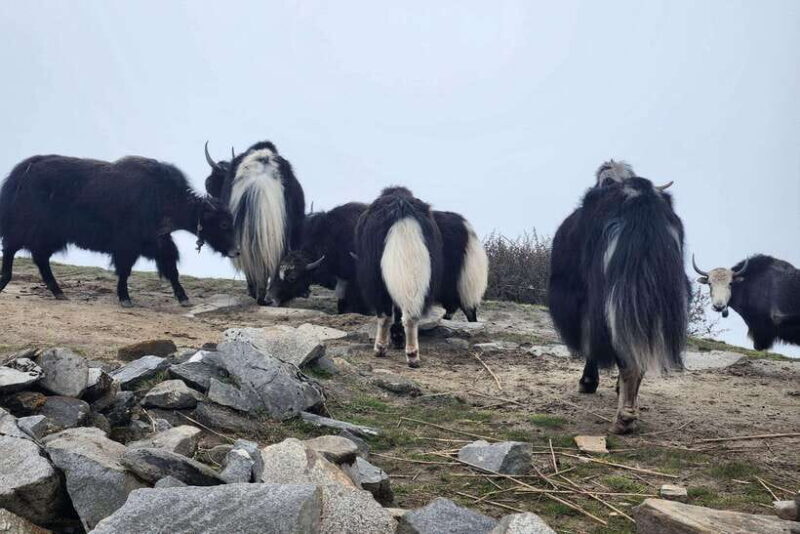
Our review of the 4-day Mardi Himal Trek from Pokhara offers a detailed look at this popular Nepalese adventure. Designed for those who want a taste of the Himalayas without the extreme altitude or long durations, this trek combines natural beauty, cultural encounters, and manageable hiking. You’ll explore lush forests, traditional villages, and stunning mountain vistas, culminating at viewpoints that showcase some of the best of the Annapurna range.
What we find especially appealing are the expert guides, who are praised for their knowledge and care, and the spectacular mountain views that seem to appear around every corner. On the flip side, one consideration is that the weather can impact visibility, especially in the off-season, so flexibility is key. This trek suits travelers looking for a moderately challenging, well-organized adventure that balances scenery, comfort, and authentic local culture.
If you’re someone who appreciates a well-priced trek that provides a good mix of natural beauty and cultural insight, this experience is worth considering. It’s ideal for beginners, solo travelers, or couples wanting a short, fulfilling Himalayan escape.
You can check availability for your dates here:Key Points
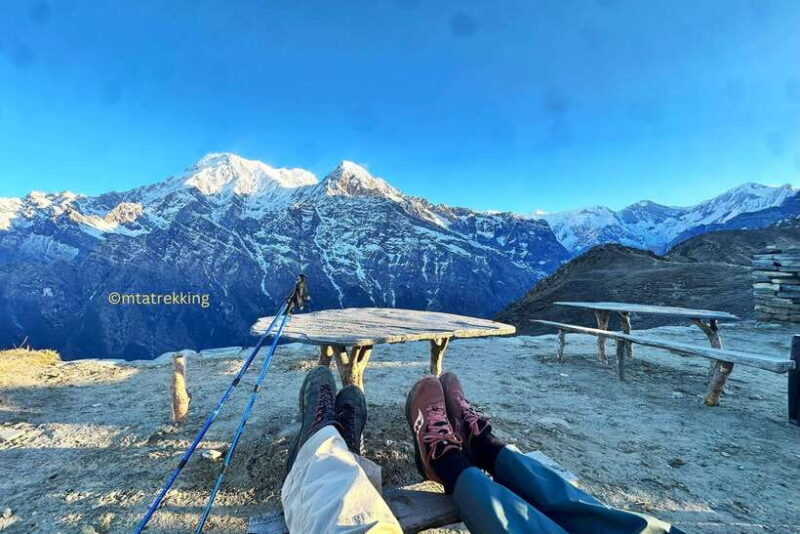
- Excellent Value: At $175 per person, this trek includes most essentials like permits, guides, and meals.
- Spectacular Views: You’ll witness sunrise over Machhapuchhre (Fishtail) and the Annapurna range from the Viewpoint at 4300 meters.
- Authentic Cultural Encounters: Passing through Gurung and Magar villages offers a glimpse into local life.
- Comfortable and Flexible: Moderate difficulty, suitable for beginners, with well-organized logistics.
- Expert Guides: Highly praised for their knowledge, care, and ability to make the trek enjoyable.
- Authentic Food and Hospitality: Delicious meals at tea houses, supporting local communities and adding flavor to the experience.
You can also read our reviews of more hiking tours in Pokhara
A Close Look at the 4-Day Mardi Himal Trek

Starting from Pokhara
The adventure kicks off with hotel pickup and an easy 1.5-hour drive through scenic landscapes to Kande. This initial stretch sets the tone—rolling hills, rice terraces, and a sense of entering the mountains. What travelers love here: the comfortable transport and the anticipation building for the trek ahead. The drive itself is a highlight, offering picturesque views of Seti River and the surrounding peaks.
Day 1: Kande to Forest Camp
From Kande, you begin a gradual trek through lush forests that feel like stepping into a different world. The route takes around 5 hours to reach Forest Camp at 2500 meters. As you ascend, you’ll pass through enchanting woods, with chances to spot birds, butterflies, and maybe even Himalayan thar. The forest’s cool shade and fresh air make for a refreshing start.
This part of the trek is perfect for those wanting to ease into higher altitudes without rushing. The Forest Camp provides an authentic Nepalese mountain experience—simple but welcoming, with cozy tea houses. Many reviews highlight how well-organized and friendly the staff are during this stage.
More Great Tours NearbyDay 2: Forest Camp to High Camp
The next day involves a 5-hour trek to the High Camp at 4000 meters. The trail continues through more dense forest and alpine scenery, gradually revealing distant mountain views. The ascent is steady but manageable, thanks to the guides’ pacing and encouragement.
Here, you’ll start sensing the grandeur of the Himalayas as you approach the high camp, which sits in a peaceful clearing surrounded by towering peaks. The highlight: the sensation of being at a significant elevation, with panoramic vistas opening up as the clouds sometimes clear.
You can also read our reviews of more tours and experiences in Pokhara
Day 3: Sunrise Viewpoint and Descent
A pre-dawn start at 4:00 am leads you to the Viewpoint at 4300 meters, which is the core highlight. From this vantage point, you’ll witness a breathtaking sunrise over Mt. Fishtail (Machhapuchhre) and the Annapurna range, as many reviewers have noted, “jaw-dropping” and “worth every step.” If weather cooperates, you’ll see the peaks glow in the early morning light.
After soaking in the view, you descend back to High Camp for breakfast, then continue down to Low Camp at 3000 meters. This day combines the thrill of the early ascent with the satisfaction of a scenic downhill trek through forests and terraced fields.
Day 4: Siding Village and Return to Pokhara
The final day involves a 3-hour trek from Low Camp to Siding Village, a peaceful settlement on the way back to Pokhara. Here, you can enjoy the hospitality of local families and see the Mardi River, which flows from Mardi Mountain’s base. Many reviews mention how the scenery at Siding is pristine and how the local culture adds depth to the experience.
After a hearty lunch, a jeep takes you from Siding back to Pokhara, completing a 2.5-hour journey filled with reflections on the mountains and the warm welcome of Nepalese villagers.
What Makes This Trek Special
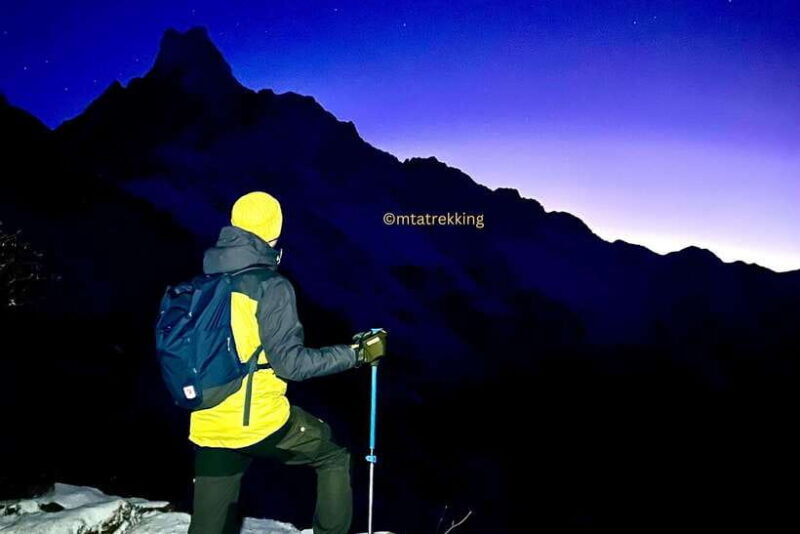
Stunning Mountain Vistas: The highlight for most travelers is reaching the Viewpoint at 4300 meters, where the sunrise over the Annapurna range and Machhapuchhre leaves a lasting impression. As one reviewer put it, “The view was simply amazing,” and another mentioned how the forests and alpine trails “felt like a dream.”
Authentic Cultural Encounters: Passing through Gurung and Magar villages, travelers get a chance to see how mountain communities live. Many reviewers praised the guides’ efforts to share local traditions and customs, making the trek more than just a hike.
Balance of Comfort and Adventure: The trek’s moderate difficulty makes it accessible to beginners, yet it still offers enough challenge to feel rewarding. The organized logistics—transfers, permits, accommodations—are well thought out, which adds to the overall value. As one guest said, “The trek started in rain but cleared into jaw-dropping mountain views,” highlighting the importance of timing and weather.
Excellent Guides and Food: From heartfelt reviews, guides like Kaji and Jeevan stand out for their kindness, knowledge, and attentiveness. Food at tea houses is described as good and organic, with many appreciating the support it provides to local communities.
Affordable Price Point: At $175, this package offers substantial value considering what’s included—permits, guide, meals, and transport. The all-in nature means fewer surprises along the way, which many travelers find reassuring.
Practical Considerations and Logistics
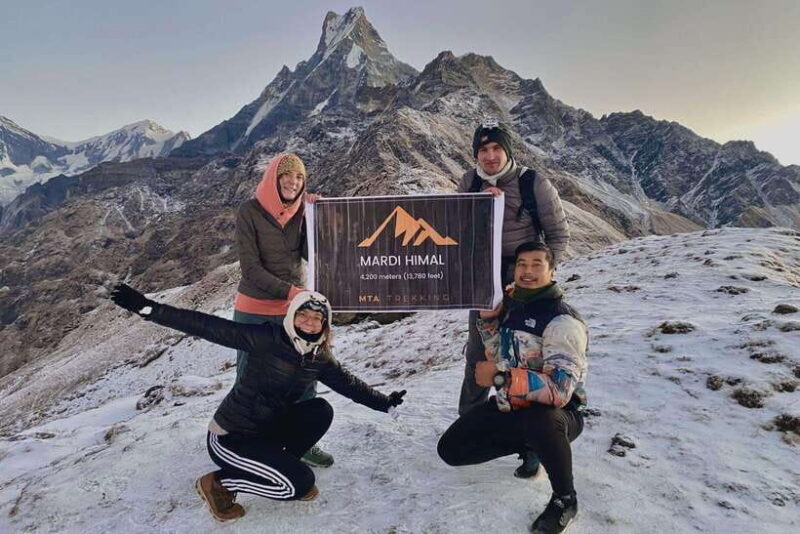
Duration and Flexibility: The trek takes about 4 to 5 days, with the core walking days being quite manageable. Check availability for the starting date that suits your schedule, as the trek can be tailored slightly.
Transportation: The journey from Pokhara to Kande is a comfortable drive, and the return transfer from Siding to Pokhara is smooth. This ease of access makes it an attractive option for those with limited time.
Accommodation: Staying in tea houses along the route provides a charming, authentic experience. The quality varies but is generally comfortable enough for a mountain trek, with some reviews noting modest hygiene in the higher camps and recommending bringing a sleeping bag for extra comfort.
Weather and Seasonality: The ideal times are spring (March-May) and autumn (September-November). During winter or monsoon, trekking beyond the Viewpoint might be unsafe or less enjoyable due to snow and slippery trails. Guides are cautious about safety, often limiting ascent to the Viewpoint during adverse conditions.
Safety and Altitude: The highest point, at 4300 meters, is moderate compared to other Himalayan treks, but altitude sickness is still a consideration. Guides monitor health and advise accordingly, ensuring a safe experience.
What to Pack: Warm clothing, sunglasses, sun hat, sunscreen, and a flashlight are essential. Bringing cash is recommended for tipping and buying local food, which many reviewers highlight as delicious and worth supporting.
What Reviewers Say
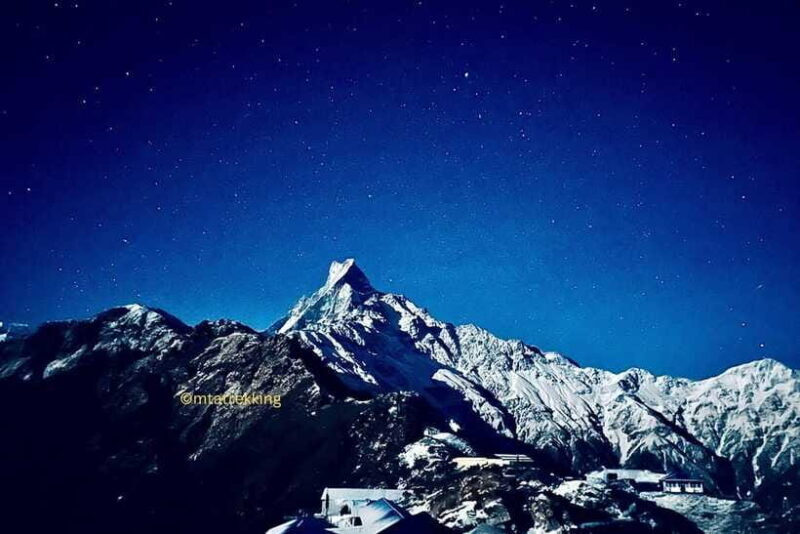
Authentic reviews paint a picture of a well-organized and memorable trek. Many travelers praise the guides, especially Kaji and Jeevan, for their professionalism and friendliness. Comments like “I felt safe and inspired” and “the view was simply amazing” highlight the emotional and visual impact.
Several mention how the local food and hospitality enhance the trip, with some noting the importance of bringing a sleeping bag due to hygiene conditions in the tea houses. The overall consensus: this trek is beautiful, well-managed, and excellent value.
The Sum Up
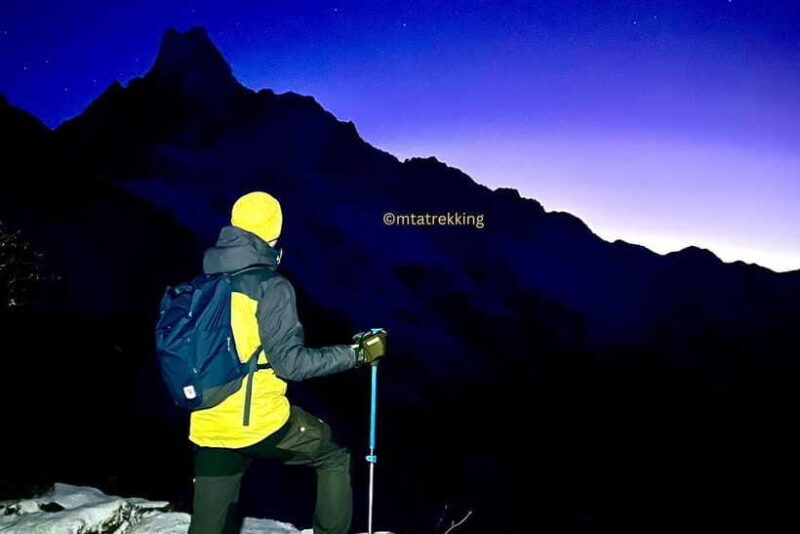
The Pokhara 4-Day Mardi Himal Trek offers a fantastic blend of natural beauty, culture, and manageable hiking. It’s particularly well-suited for beginners, solo travelers, or couples looking for an authentic Himalayan experience without the commitment of longer, more challenging treks. The well-organized logistics, knowledgeable guides, and stunning views make it a worthwhile investment for anyone wanting a taste of Nepal’s breathtaking mountains.
Whether you’re after a sunrise over the peaks, a chance to connect with local communities, or simply a memorable adventure, this trek delivers on all fronts—at a price that’s hard to beat.
Frequently Asked Questions
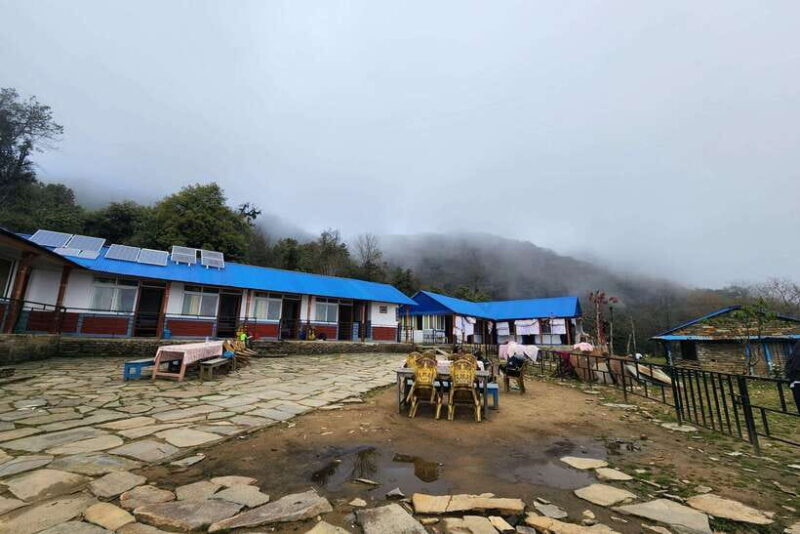
Is this trek suitable for beginners?
Yes, the trek is considered moderate and suitable for those new to Himalayan trekking, thanks to its manageable daily distances and gradual ascents.
How high do I go during the trek?
You’ll reach the Viewpoint at 4300 meters, which offers incredible mountain views while remaining accessible for most trekkers.
Are meals included?
Yes, breakfast, lunch, and dinner are included during the trek, providing a variety of local and fresh foods at the tea houses.
What should I bring?
Warm clothing, sunglasses, sun hat, sunscreen, and a flashlight are recommended. Bringing cash for tips and extra purchases is also advisable.
Is transportation arranged?
Yes, the package includes hotel pickup and drop-off, plus transportation from Kande to Pokhara, making logistics straightforward.
Can I cancel if my plans change?
Yes, you can cancel up to 24 hours in advance for a full refund, offering flexibility for your travel plans.
Is the trek safe during the off-season?
Safety is a priority; during winter or monsoon, guides limit trekking beyond the Viewpoint due to snow and slippery trails, prioritizing your safety.
What is the group size?
The experience is offered as a private group, ensuring personalized attention and flexibility.
This Mardi Himal Trek is a fantastic way to see the Himalayas up close, enjoy Nepalese hospitality, and create lasting memories—all for a fair price. It’s a great choice for those seeking a balanced, authentic Himalayan adventure.
You can check availability for your dates here:More 4-Day Experiences in Pokhara
- From Pokhara: 4-Day Ghorepani Poon Hill Trek with Guide
- Ghorepani Poon Hill Classic 4-Day Trekking Experience
- Pokhara: 4-Day Ghorepani Poon Hill Sunrise Trek
- Pokhara: 4-Day Poon Hill and Ghandruk Guided Trek
- Pokhara: 4-Day Ghorepani, Poonhill & Ghandruk Mountain Trek
- Pokhara: 4-Day Mardi Himal Trek with Guide & Himalayan Views
More Hiking & Trekking Tours in Pokhara
- Pokhara: 3-Day Ghorephani and Poon Hill Private Trek
- From Pokhara: Kori Danda Trek with Sikles Village Stay
- From Pokhara: 4-Day Ghorepani Poon Hill Trek with Guide
- Pokhara: Annapurna Day Hike with Panoramic Views
- Ghorepani Poon Hill Classic 4-Day Trekking Experience
- From Pokhara: 5-Day Annapurna Trek with Hidden Lake
More Tour Reviews in Pokhara
- Pokhara: 3-Day Ghorephani and Poon Hill Private Trek
- Pokhara: Airport Transfer by Private Car
- From Pokhara: Kori Danda Trek with Sikles Village Stay
- Pokhara: Horseback Riding Adventure with Hotel Pickup
- From Pokhara: 4-Day Ghorepani Poon Hill Trek with Guide
- Pokhara: Annapurna Day Hike with Panoramic Views
Not for you? Here's more nearby things to do in Pokhara we have reviewed
- Pokhara: 3-Day Ghorephani and Poon Hill Private Trek
- Pokhara: Airport Transfer by Private Car
- From Pokhara: Kori Danda Trek with Sikles Village Stay
- Pokhara: Horseback Riding Adventure with Hotel Pickup
- From Pokhara: 4-Day Ghorepani Poon Hill Trek with Guide
- Pokhara: Annapurna Day Hike with Panoramic Views
- Ghorepani Poon Hill Classic 4-Day Trekking Experience
- From Pokhara: 5-Day Annapurna Trek with Hidden Lake
- Pokhara: 4-Day Mardi Himal Trek
- Tibetan Cultural Day Tour Pokhara 2025/2026
- Unforgettable Memories: best view points and Soak in Pokhara
- Luminous Sarangkot: A Breathtaking View of the Himalayas”
